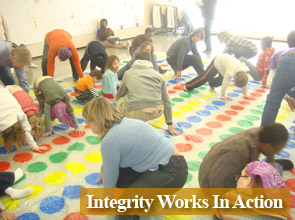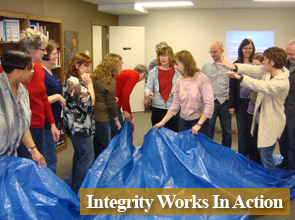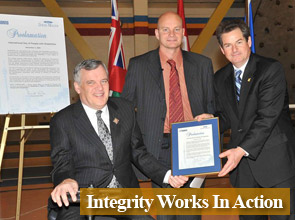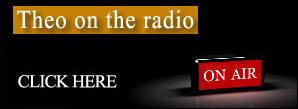Know any good organizational culture or team development books? Tell us what they are along with your review. We’ll post your listing and review so we can share in the fruits of each other’s wisdom. We’ll start off with a few and hope you’ll join in. Email your suggestions and reviews to us.
It would be safe to say that there have been hundreds, maybe thousands, of books published about organizational culture and management principles. And you have to stay on top of them all! How does that fit with the saying “there is nothing new under the sun”? The truth probably lies somewhere in the middle. Which is a good thing because we know that your time and memory capacity is limited. We believe that you’ll be fine if you read and implement the following:
Scott, A. (1996). The Dilbert Principle: A Cubicle’s-Eye View of Bosses, Meetings, Management Fads & Other Workplace Afflictions. New York: HarperBusiness.
Yes! You get to start off by reading comic strips. Humour is, after all, one of Integrity Work’s values. Scott Adams provides a thorough revelation of the many ways that organizations waste time, resources, and demoralize employees. Learning what not to do has helped many of us be better parents so why not apply the same principle to business. Read how organizations waste copious amounts of time writing jargon filled mission statements and debating over the fine distinctions between mission and vision. Identify with a wide variety of mismanagement strategies and the co-worker humiliation and undermining tactics of organizations gone wrong. Mr. Adams writes from 17 years of cubicle imprisonment experience, and sadly, much of his material is garnered from true stories sent to him by managers and employees. Seriously, a must read.
Buckingham, M., & Coffman, C. (1999). First break all the rules: What the world’s greatest managers do differently. New York: Simon & Schuster.
If you’re looking for conclusive evidence linking organizational culture to productivity, profit, customer satisfaction, and employee retention this is it. The Gallup Organization surveyed literally over a million employees from a broad range of companies, industries and countries, and linked their opinions and experience to variables measuring organizational success. This book provides a fantastic in-depth analysis of what inspires talented employees to stay and perform up to their potential. Find out the key 12 questions staff need to be able to say “yes” to and how managers play such a vital component in building positive productive organizational culture. Moving far beyond opinion or anecdotal evidence, the authours provide statistically valid information designed to guide any organization in getting the most from its people. A great guide for managers and leaders.
Reina, D., & Reina, M. (2006). Trust and Betrayal in the workplace: Building Effective Relationships. Berret-Koehler Publishers, Inc.
Sometimes there seems to be the idea that work relationships are substantively different than other relationships. In some ways that may be true, but on some basic level, good relationships have things in common no matter what the circumstance. This book is about trust, a component of relationship building generally understood to be at the foundation of healthy relationships. The authours show specifically how to build trust in the workplace, the benefits of doing so, as well as how trust can be betrayed and how that impacts organizations. This book could be used as a guide for any relationship, but might especially be useful for new leaders of organizations looking to establish solid relationships, or for leaders of organizations that have had a lot of internal conflict and need some healing and a fresh start.
Deal, J. (2007). Retiring the Generation Gap: How Employees Young & Old can find Common Ground. Jossey-Bass.
“Just how different are the generations, really?” That’s one of the questions that the authour seeks to answer with her study of what is becomingly commonly known as “intergenerational” workplace relationships. Are people from different generations motivated differently at work? Do younger people have different values than older people? Based on extensive research, the authour takes a look at some of the problems that occur in the workplace between people from different generations and concludes that any “gaps” and resulting conflict are typically the result of miscommunication and misunderstanding. Turns out that generations may not be so different after all, but may express themselves differently. This is a very useful book to be used to build common ground and understanding between people of differing ages and seniority in the workplace.
Babiak and Hare (2006). Snakes in Suits: When Psychopaths go to Work. Harper Collins Canada.
This is a book that will scare you. If you’ve ever encountered a person who seems very slick and is able to quickly manipulate his or herself into positions of power, and you end up feeling used or betrayed by them after you’re no longer of use to them, there’s a chance that you’ve encountered a psychopath. Babiak and Hare do a very good job of pointing out how organizations can screen out psychopaths, who see others as objects and “means to an end”. Thorough interviewing, resistance to charm, and an awareness of your own weak spots which the psychopath would use to manipulate you are important components of prevention. Allowing a “snake” to infiltrate a company is devastating to morale and productivity.
Barret (1998). Liberating the Corporate Soul: Building a Visionary Organization.Butterworth-Heinemann.
A classic! This is an amazing book and the book to read if you’re looking for a blueprint to build an organization truly alive and oriented around values. A great book to read for leaders. Richard Barret makes a compelling case for soul in the workplace.
Harris (2010). The Moral Landscape: How Science can determine Human Values. Simon and Schuster. This is a very unusual read. Sam Harris takes a different slant on the issue of values and science and describes how we can ascertain “right vs. wrong” based on whether our actions are likely to help each other live the best lives possible. A unique approach to the study of morality and easily applicable to the workplace.
Csikszentmihalyi (2003). Good Business: Leadership, Flow, and The Making of Meaning. Penguin Books.
This is a great read for leaders. The author outlines the values associated with visionary leaders and provides strategies for how to make work fulfilling and meaningful. An excellent argument for the importance of loving one’s job.
Tharp (2003). The Creative Habit: Learn and use it for Life. Simon and Schuster. For those of us who believed the lie that we were not creative. Twyla Tharp shows how we are all creative in some form or another and she provides exercises designed to help us access that creativity. Creativity is a quality much sought after in employees, and this book will enable you to find that strength within you.
Goleman (1995). Emotional Intelligence: Why it can matter more than IQ. Bantam Books. I would be a serious oversight to not include this groundbreaking exploration of the human skills required for successful relationships. Perhaps the most important skill of all; the ability to empathize and relate well with co-workers. Daniel Goldman is a true pioneer and illustrates how qualities such as empathy, self-awareness, and self-discipline can and should be learned.












